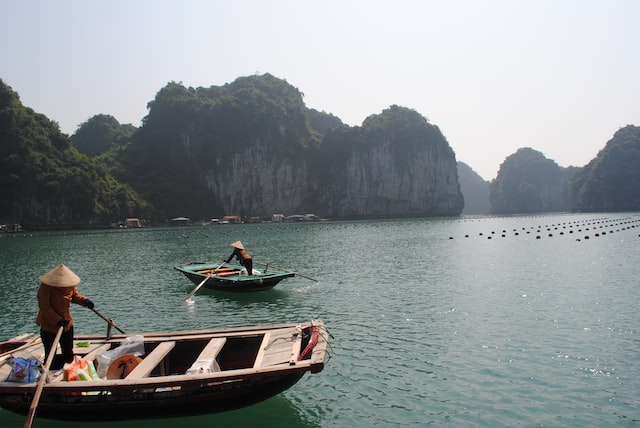Indigenous Communities and Community-Based Conservation
7/20/20233 min read


According to Berkes (2007), the classic definition of community-based conservation (“CBC”), as set out in 1994 by Western and Wright, encompasses the protection of natural resources and biodiversity for the benefit of, as carried out by, local and/or Indigenous communities, with the focus on humans and the natural world existing side-by-side in harmony. CBC is characterised by its emphasis on empowering, promoting, and advancing conservation structures and processes which fuse local and cooperative/collective practices and which recognize that the economy, society, and environment are inextricably intertwined and interdependent (Esmail et al 2023).
The evolution of CBC has shifted over the centuries. On one hand, if CBC is to be interpreted as the judicial and sustainable use of natural resources for local livelihoods, this practice has been in adopted since time immemorial (Berkes 2007). On the other hand, and particularly in the past 30 years, the concept of CBC has expanded to include a clear and immediate connection between conservation and benefits to local communities, thereby steering and motivating long-term local efforts to protect biodiversity (Berkes 2007).
The key features of Indigenous-led CBC, building uniquely upon the community-led aspect of conservation, include “a holistic and human-inclusive view of nature that’s imbued with cultural or spiritual value” (Vox 2021). Indigenous CBC may also be labelled equitable conservation where such strategies elevate and enhance the role of Indigenous and local peoples in safeguarding natural ecosystems (Dawson et al 2021).
Indeed, the vast majority of research presenting beneficial social and biodiversity outcomes are seen in case studies in which Indigenous and local communities are centred and integrated (Dawson et al 2021).
In contrast with the CBC framework, orthodox top-down conservation strategies, as formulated in the late 19th century, are generally organized around the precept that humans and wildlife should be separated, and that national governments should have legal title to and interest over wildlife and nature (Berkes 2007). Commentators have been vocal in their negative analysis of such state-led programs. Specifically, top-down conservation programs have been criticized for prioritising economic advantages over cultural values, and for generating economic conflict, inequality, brutality, and the marginalization of Indigenous and local communities (Esmail et al 2023).
CBC in its various iterations offer various implications for biodiversity, socio-economic development and human well-being.
Circumstances in which CBC mandates local representatives with decision-making power, particularly in conflict resolution mechanisms, have been observed to deliver both societal and conservation outcomes with greater sustainability and longevity (Young et al 2021).
Since conservation is a multi-scalar endeavour, conservation goals cannot be effectively achieved if conservation is designed and executed at a purely community-based or state-based level (Berkes 2007). Notably, CBC may be executed at a grassroots level while being initiated top-down by reason of a national law or regulation (Esmail et al 2023), thereby supporting the argument that the notion of conservation at the community level ought also to acknowledge and embrace the interplay and interactivity between political and social processes at multiple levels.
Where development is approached with conservation as a priority, socio-economic synergies are more likely given that the knock-on effect of bolstering social capital of local communities, enhancing community solidarity, and improving the strength of institutions to advance sustainable development (Tai 2007).
References:
Berkes, F. (2007). ‘Community-based conservation in a globalized world’. PNAS 15188 –15193, September 25, 2007, vol. 104 no. 39. www.pnas.org/cgi/doi/10.1073/pnas.0702098104
Dawson, N. M., Coolsaet, B., Sterling, E. J. et al (2021). ‘The role of Indigenous peoples and local communities in effective and equitable conservation’. Ecology and Society 26 (3):19. https://doi.org/10.5751/ES-12625-260319
Esmail, N., McPherson, J.M., Abulu, L., et al (2023). ‘What’s on the horizon for community-based conservation? Emerging threats and opportunities’. Trends in Ecology & Evolution, July 2023, Vol. 38, No. 7 https://doi.org/10.1016/j.tree.2023.02.008
Tai, H-S (2007). ‘Development Through Conservation: An Institutional Analysis of Indigenous Community-Based Conservation in Taiwan’. World Development Vol. 35, No. 7, pp. 1186–1203, 2007. doi:10.1016/j.worlddev.2006.09.015
Vox. 2021. ‘Indigenous people are the world’s biggest conservationists, but they rarely get credit for it’. 11 June 2021. https://www.vox.com/22518592/indigenous-people-conserve-nature-icca
Young, J.C., Alexander, J.S., Bijoor, A., et al. (2021). ‘Community-Based Conservation for the Sustainable Management of Conservation Conflicts: Learning from Practitioners’. Sustainability 2021, 13, 7557. https://doi.org/10.3390/su13147557